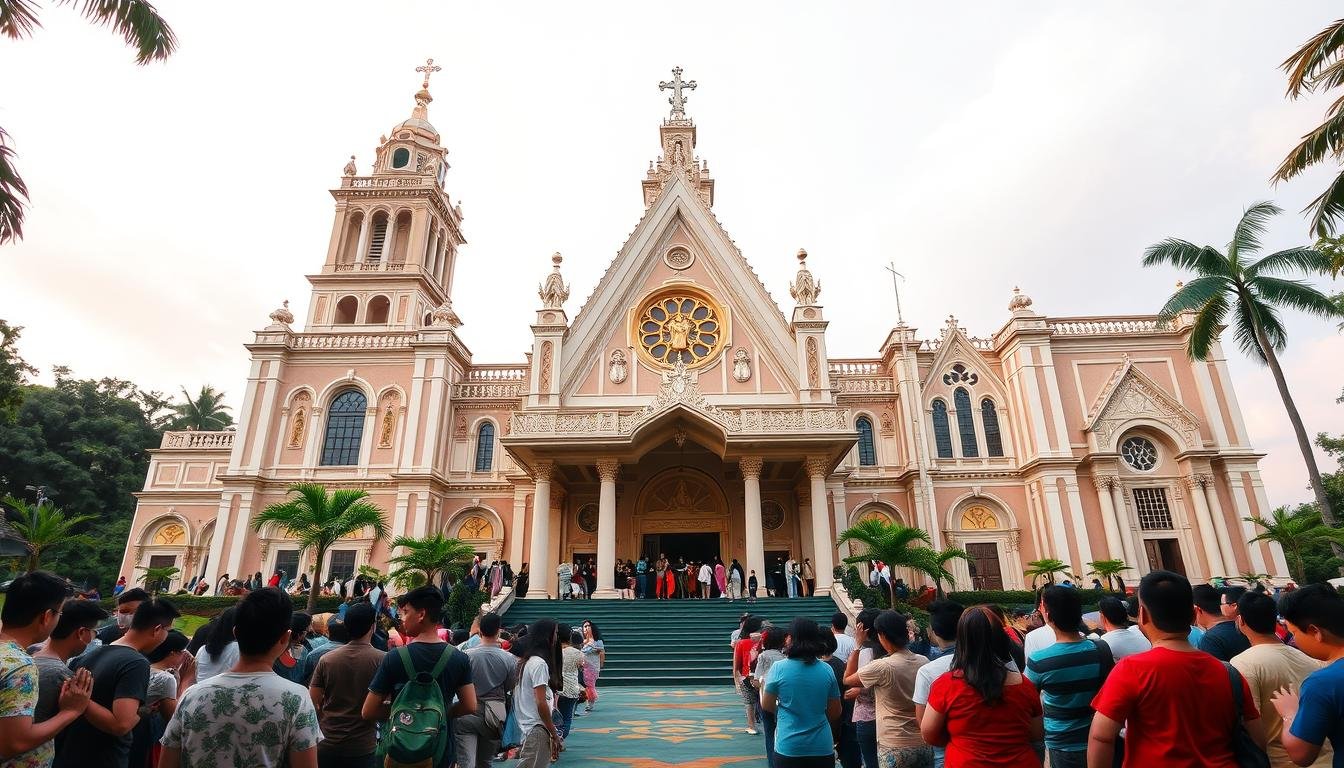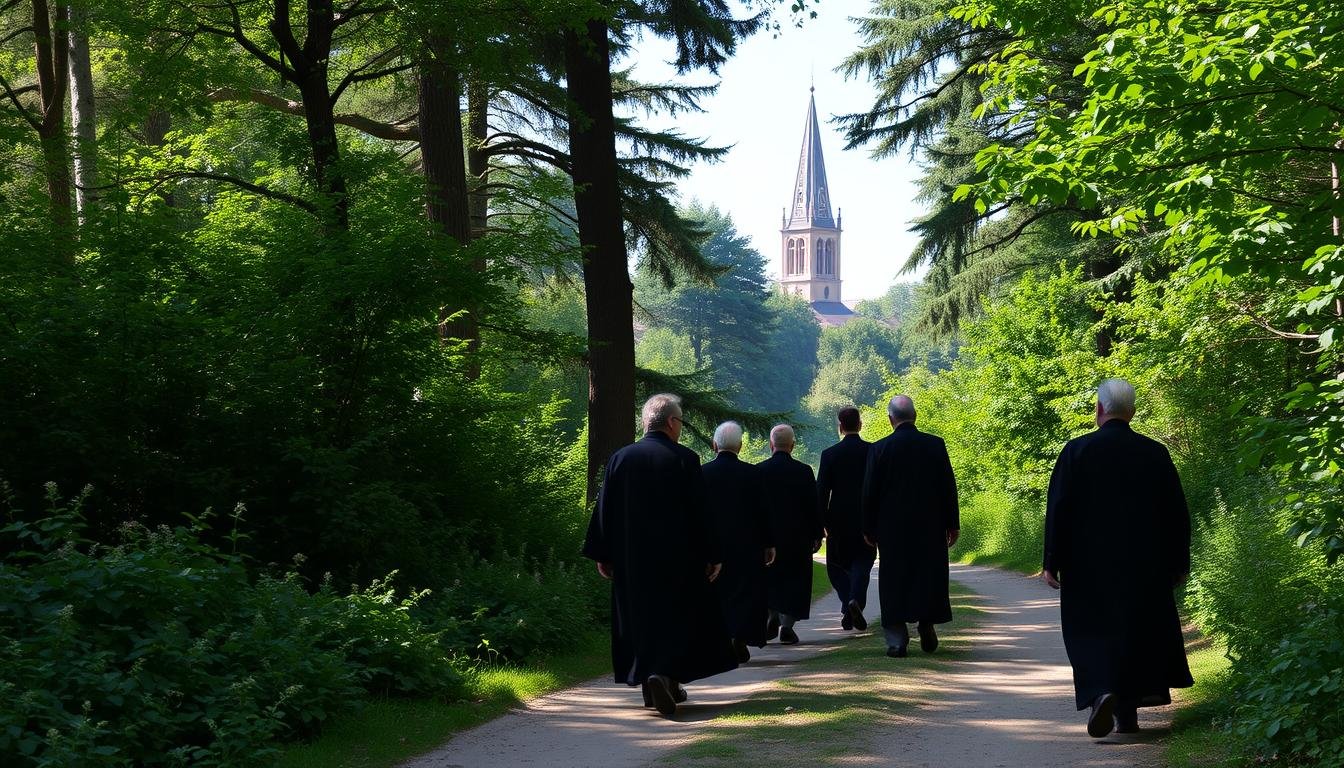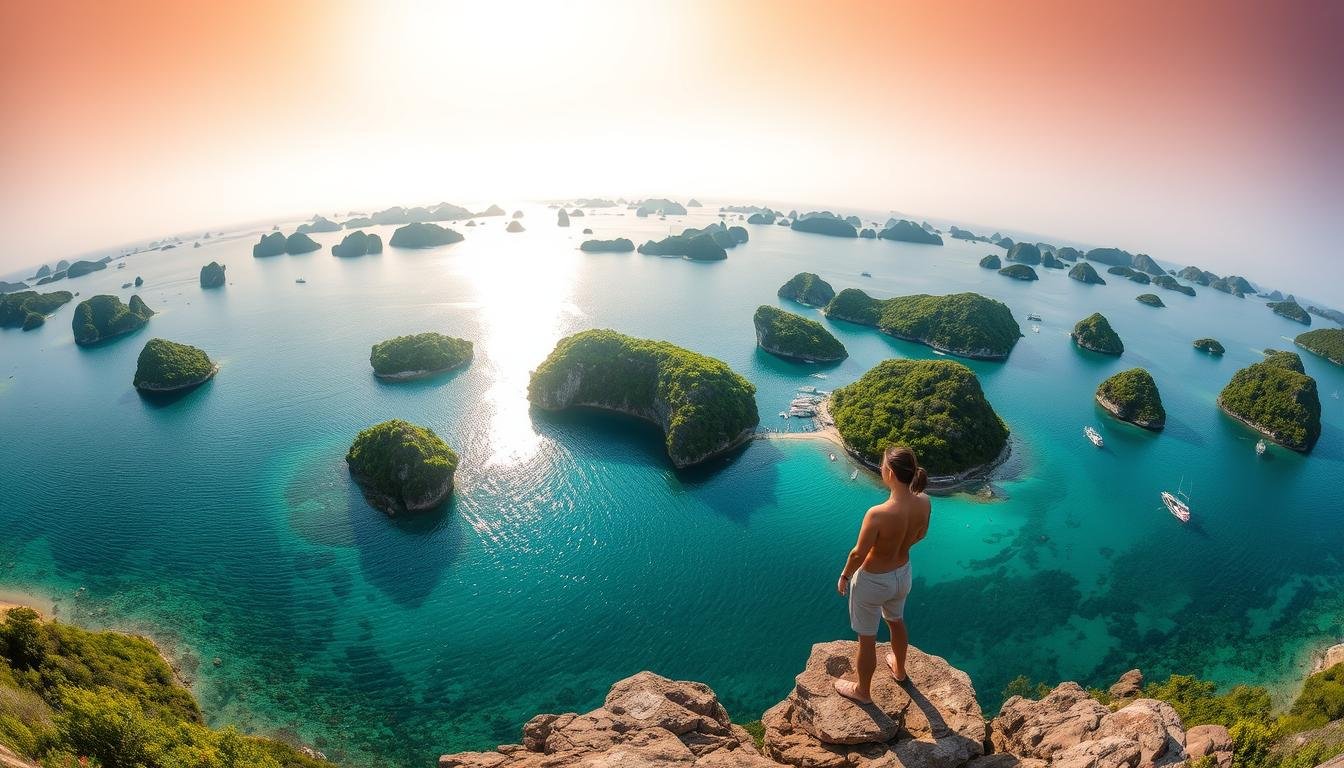Have you thought about going on a spiritual journey in Pangasinan? This province in the Philippines is famous for its beautiful nature and strong religious roots. It’s not just about the Hundred Islands and beaches. Pangasinan also has a rich history and culture that invites those seeking a deep faith experience.
What mysteries and traditions wait in the sacred places and churches? These sites have drawn pilgrims for many years.
Key Takeaways
- Pangasinan is a top spot for pilgrimage journeys, mixing natural beauty with spiritual heritage.
- The province has many historic Catholic churches, shrines, and sacred sites that have called pilgrims for centuries.
- Events like the Bangus Festival and Pista’y Dayat show the province’s deep traditions and cultural practices.
- Places like the Manaoag Church and Apo Isyu Shrine welcome both local and international visitors with open arms.
- Visiting Pangasinan’s pilgrimage spots can change you, offering chances for deep thought and a closer faith connection.
Understanding Pilgrimage in Pangasinan
Historical Context: Tracing the Roots of Pilgrimage in Pangasinan
Pangasinan has a long history of pilgrimage, starting with the Spanish colonial era. This was when Catholicism first came to the area. Spanish missionaries built many historical churches and religious shrines back then.
These sites became places of deep devotion for locals. Over time, they were known for their miracles. This drew pilgrims from all over the Philippines and even other countries.
The Our Lady of Manaoag is a famous Marian image. It has brought millions to the Manaoag Church. This makes it a top pilgrimage destination in the country.
Pangasinan’s strong Pangasinan spirituality and cultural heritage make it ideal for faith-based tourism and spiritual retreats.
| Pilgrimage Site | Significance | Visitor Highlights |
|---|---|---|
| Minor Basilica of Our Lady of the Most Holy Rosary of Manaoag | Renowned for the miraculous image of the Blessed Virgin Mary | Attracts millions of devotees during Holy Week and Marian feast days |
| Sky Plaza in Natividad | Hilltop shrine with a giant statue of the Virgin Mary | Offers panoramic views and a serene atmosphere for prayer and meditation |
| Calvary Hill in Bani | Features life-size statues depicting the Stations of the Cross | Pilgrims can embark on the “Via Crusis” trail with 287 steps |
Pangasinan’s rich religious history and deep spirituality make it a top spot for faith-based tourism and spiritual retreats.
Major Pilgrimage Sites
Pangasinan is a province in the Philippines known for its many churches and shrines. These places are important for pilgrims from all over. The Minor Basilica of Our Lady of the Rosary of Manaoag, or the Manaoag Church, is one of the most famous.
The Manaoag Church started in 1600 and has a rich history. It’s a 17th-century church where many believe the Virgin Mary appeared miraculously. Every year, millions come to visit, making it the top spot for Catholic tourists in the country. The church was updated in 1912 and now stands 88.3 meters long, 55.9 meters wide, and has a wide nave. It’s in the Neo-Romanesque style, with one dome and one tower.
Another key site is the Apo Isyu Shrine in Anda, dedicated to the “Black Nazarene” image of Christ. Other churches like the Saint Vincent Ferrer Parish Church in Bayambang and the Hyacinth Parish Church in Urdaneta also attract many visitors. Each has its own story and beautiful design.
These places are spiritual centers, offering peace, inspiration, and a deep spiritual journey. Whether you’re deeply religious or just looking for a spiritual connection, the religious shrines in Pangasinan will touch your heart and soul.

| Pilgrimage Site | Location | Architectural Style | Significance |
|---|---|---|---|
| Minor Basilica of Our Lady of the Rosary of Manaoag | Manaoag, Pangasinan | Neo-Romanesque | Believed to be the site of a miraculous apparition of the Virgin Mary, drawing millions of pilgrims annually |
| Apo Isyu Shrine | Anda, Pangasinan | N/A | Honors the miraculous image of Christ known as the “Black Nazarene” |
| Saint Vincent Ferrer Parish Church | Bayambang, Pangasinan | N/A | Notable church with unique history and architecture |
| Hyacinth Parish Church | Urdaneta, Pangasinan | N/A | Notable church with unique history and architecture |
| St. James the Great Parish Church | Bolinao, Pangasinan | N/A | Notable church with unique history and architecture |
Pilgrimage Traditions and Rituals
Pilgrimage in Pangasinan is more than just visiting sacred sites. It’s deeply tied to the province’s lively culture and religious festivals. The Bangus Festival and the Pista’y Dayat are two events that highlight Pangasinan’s pilgrimage traditions.
Bangus Festival: Honoring the Milkfish
The Bangus Festival takes place every April in Dagupan. It celebrates the milkfish, a key part of the local economy. The festival’s main event is the Gilon-Gilon ed Baley, a street dancing competition. Participants wear colorful costumes and dress up as milkfish.
This festival lets pilgrims dive into Pangasinan’s cultural traditions. It’s a chance to experience the province’s heritage.
Pista’y Dayat: A Tribute to the Sea
The Pista’y Dayat, or “Sea Festival,” happens on May 1st in Lingayen. It honors the sea’s bounty with a boat parade and various cultural activities. Pilgrims can see the religious processions and join in the fun.
These religious festivals and pilgrimage traditions are key for the locals. They also let visitors experience pangasinan tourism. It’s a way to connect with the sacred rituals and celebrations that shape Pangasinan’s identity.
Planning Your Pilgrimage
Pangasinan is a place full of faith and spiritual retreats. It’s perfect for a meaningful pilgrimage. The best time to go is from December to May, when it’s dry and busy.
During this time, you can join in on big cultural festivals like the Bangus Festival in April and the Pista’y Dayat in May. These events let pilgrims dive deep into the area’s traditions and see how the locals show their faith.
The weather is sunny and nice during this season. It’s great for seeing Pangasinan’s beautiful spots and sacred places. You can visit the Hundred Islands National Park, Tondol Beach, Balingasay River, and more. These places offer a peaceful setting for your pilgrimage.
Pangasinan is a pilgrimage spot all year, thanks to its deep religious history. But, be ready for typhoons and heavy rains from June to early October.
Highlights of the Pilgrimage Season in Pangasinan
- Attend the Bangus Festival in April, celebrating the province’s famous milkfish
- Participate in the Pista’y Dayat in May, a festival honoring the province’s coastal heritage
- Explore the Hundred Islands National Park, a stunning archipelago of 123 islands
- Visit the Minor Basilica of Our Lady of the Rosary of Manaoag, a renowned pilgrimage site
- Discover the natural beauty of Tondol Beach, Balingasay River, and Bolinao Falls
Pangasinan has a lot to offer for those seeking spiritual growth, cultural experiences, or a peaceful break. Plan your trip during the dry season to enjoy the festivals, beautiful views, and sacred places.

Personal Reflections and Experiences
Many people have found spiritual transformation and personal growth on their pilgrimage to Pangasinan’s sacred sites. Visiting these places has deeply moved and changed lives. Maria, for example, found solace and renewed faith at the Manaoag Church during a tough time.
“The moment I stepped into the Manaoag Church, I felt a sense of peace wash over me. Kneeling before the image of the Virgin Mary, I poured out my heart and found the strength to face the challenges ahead.”
José was deeply moved by the Pista’y Dayat festival in Lingayen. He saw the community’s deep respect for the sea and its gifts.
“The procession of boats along the Limahong Channel was a truly awe-inspiring sight. It made me realize the intrinsic connection between the people of Pangasinan and their natural environment, and how this relationship is so deeply rooted in their faith and traditions.”
These stories show how pilgrimage in Pangasinan changes lives. Visitors connect deeply with the area’s religious traditions and culture. This leads to a stronger bond with the divine and a new sense of purpose.
Conclusion
Pangasinan is a top spot for pilgrimages in the Philippines. It’s known for its history, culture, and deep spirituality. Visitors can explore famous sites like the Manaoag Church and discover hidden gems.
This guide shows how you can start a journey of spiritual growth in Pangasinan. You can connect with the Philippines’ Catholic roots or join in the vibrant festivals. The Manaoag Shrine, historic Vigan churches, and the Bangus Festival are just the start.
So, get ready to explore Pangasinan’s spiritual side. As you visit its sacred places and dive into its culture, you’ll find a journey that changes you. Start this pilgrimage and let Pangasinan’s beauty and traditions touch your heart and soul.
FAQ
What are the major pilgrimage sites in Pangasinan?
What are the popular religious festivals and traditions in Pangasinan?
When is the best time to visit Pangasinan for pilgrimage?
What kind of personal experiences do pilgrims have in Pangasinan?
How does Pangasinan’s religious history and spirituality contribute to its appeal as a pilgrimage destination?
Source Links
-
- Pangasinan Travel Guide: Home of the Hundred Islands | Guide to the Philippines
- Manaoag Church
- Pangasinan Churches Pilgrimage Tour with Lunch & Transfers | Guide to the Philippines
- Our Lady of Manaoag
- Minor Basilica of Our Lady of Manaoag, Philippines | CSB
- A Pilgrimage to Pangasinan – It’s Me Bluedreamer!
- Pangasinan Joins Marian Pilgrimage Circuit Launching – See Pangasinan
- Pangasinan Adventure Tours – Philippines Travel Guide
- A Walk to Remember at Mt. Zion at Bugallon
- Enlightening 7-Day Pilgrimage Tour Package to Pangasinan, Ilocos Sur & Ilocos Norte with Flight | Guide to the Philippines
